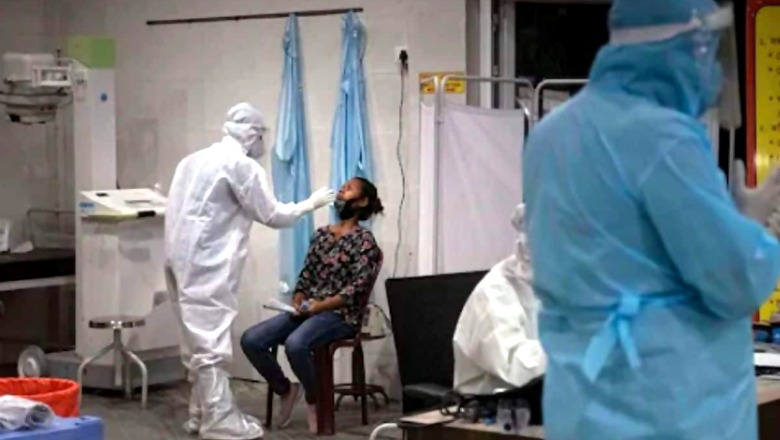India’s Jigsaw Puzzle of Covid & Health Service Availability Data: Coordination, Transparency Needed

views
Cases in India are increasing rapidly and disease is spreading. Many areas are now coming again under lockdown. India has taken very early action of nationwide lockdown from March 24 to June 8. This has helped a lot to flatten the curve of the epidemic and prepare the health system to deal with the surge of cases after lockdown. To fight the epidemic smartly and effectively we need well analyzed information on the epidemic that can indicate the strategy and actions.
India has many data sources on the epidemic. Unfortunately, they are fragmented, centralized and not well analyzed nor reported on. Here we describe the data sources and how they can be used to improve the epidemic control work. This will ensure that minimum cases and deaths happen and the economy can restart at the earliest.
In any epidemic the first thing to collect are suspected symptomatic cases – this is flu like illness – or influenza like illness – (ILI) – this is patient with cough, fever, cold, etc. These symptoms are very common and should be reported as cases of ILI. Currently they are not getting reported nor compiled on analyzed at any level even though WHO has said that there should be surveillance of ILI.
ILI provide a wide base of possible cases of Covid in any community. The next level is severe respiratory illness (SARI) defined as any respiratory illness like cough, fever, shortness of breath, etc, which is so severe that needs hospital admission. So SARI data should come from all hospitals – public and private. It may be collected in some states but is not reported state-wise or nationally on govt website. There no detailed analysis of SARI data was collected.
The next are suspected cases – ILI or SARI are tested with RTPCR test. This test has sensitivity of 70% i.e if 10 cases are of proven Covid are tested using RTPCR – 7 will be positive and 3 will be negative (false negative). This is the mainstay of diagnosis in India of Covid cases- the reported numbers coming from government are of the RTPCR positive cases declared each day at city, district, state and national level. So the first thing to remember is this test, even if done for all needed cases, will be an under-estimate by 30% due to its sensitivity of 70%. This test is expensive – at about Rs 2,000 to Rs 4,500 per test and takes several hours and needs sophisticated machines and technicians.
The next common test for any respiratory problem is to take an X-ray of the chest. This is a good way to look for damage or problems in the lungs. A simple X-ray of the chest is also a good test for Covid suspected cases – in 6 out of 10 cases of Covid can be picked up by a trained radiologist – sensitivity of 60%. It costs much less -- about Rs 200-Rs 500.
The next test is a High Resolution CT scan (HRCT). It has sensitivity of 95% or so, i.e. out of 100 confirmed cases of Covid it will pick up 95 cases correctly. It costs more – about Rs 4,000 per case. But results are seen in 15 minutes to 30 minutes. Currently the government is not capturing or compiling cases diagnosed by x-ray or HRCT which is being done in private sector. This is a great loss to the number of cases. Some private doctors have conveyed that in some cities there are hundreds of HRCT being done to diagnose Covid, but are not being reported or counted in government numbers.
X-ray facilities are available at many many places including rural area and HRCT is available in private sector in many cities and towns. The government must encourage diagnosis by these radiological tests and count them as Covid cases if the X-ray or HRCT picture is highly suggestive of Covid/viral pneumonia and symptoms also suggest the same. We cannot limit the case definition to only microbiologically confirmed cases, especially in a pandemic situation when we have severe limitations on availability and use of the RTPCR tests. We can call the cases diagnosed by X-ray or HRCT as suspected cases of Covid and start the treatment. We can also take measures such as contact tracing, isolation and quarantine/containment.
The next level of data is deaths due to Covid. This is being reported every day. But are we sure that we are not missing any Covid deaths? We are not sure, because not all suspected cases are tested. We need to monitor daily mortality from all causes every day or every week in big cities and towns and compare them with the previous years’ average daily mortality for the same month/week. This will tell us what is the excess all-cause mortality which is like a barometer of mortality level of the population in any area. India is not monitoring this very vital indicator. This is the job of the national, state and district/city registrars of birth and death – an office created by act of registration of births and deaths. It does not confirm Covid deaths but can indicate rise in mortality due to any epidemic or disaster, if there is no other cause during that week or month.
EuroMOMO is a statistical system that reports such weekly all-cause mortality in 30 countries of Europe. It picks up any cause of increase in mortality in the population and can alert the public health agencies immediately. The mortality data is compiled by NCDC and Registrar’s of birth and death at district, state and national level. But this is not happening. There were several newspaper reports from various cities, starting with Indore in Madhya Pradesh, of excess number of burials and cremations at various burial grounds and crematoriums have increased dramatically as compared to last year. But there is no official government response to such reports in the media. The registrars of death are not analyzing such data and publishing the analysis.
Another source of information is on testing – RTPCR test done on pregnant women, preoperative patients and special surveys of some special occupational groups such as doctors, vegetable vendors, etc periodically done at local or state level. But this is also not well analyzed and reported separately – from total positive cases. Before May, the close contact of the cases who were not having any symptoms were also testing but not reported separately.
Ideally Covid test results should be reported in 3-4 separate groups eg. ILI/SARI patients, close contacts of patients (symptomatic or asymptomatic), occupationally exposed – doctors, nurses, health staff, high contact people such as grocery store staff, vegetable vendors etc. And these data should be reported every day or every week to see the positivity in each group. This will give much more detailed information on how the infection is spreading in the community.
ICMR has done some scientific studies in the country. One of them is sero-surveillance to measure the prevalence of infection in the country. This study has shown that 0.7% of the population is infected in the country. But the results of this sero-surveillance study from high risk areas, where maximum cases had happened, has not been released by ICMR. And no explanation is give why the results are not released. Such surveys may have been done by other agencies which are not yet released. Such information will allow us to asses the level of immunity in the high risk areas.
Recently a new test – a rapid antigen test is being introduced and during the last week thousands of such tests may have been done. But its results are also not share in public in any state or at national level. Some secondary analysis are done by various scientists in India, but such analysis results are also not released via scientific publication.
Many people are getting treated in private hospitals for Covid but they may not have been reported in the government statistics. Private sector reporting has to be improved. There is no reporting of pharma use which can give indication of treatment of Covid. For example how many Tosilizumab injections are used in an area will give some indication of severe cases of Covid.
On the analysis front India and states/cities are very weak. Except daily totals and some basic rates not much analysis seems to be happening. For example, in any epidemic age, sex, religion, urban rural, socioeconomic class, SC/ST group wise classification of cases and rates of infection and mortality should have been calculated and presented. Spot maps should be made and shared with media and public – this has not happened. Other important statistics are reproduction number – or how many new cases one case is infecting, and secondary attack rate – that is what percent of close contacts of the case develop disease. These are also not being calculated regularly and at various state, district and city level and published. Epidemic curves are not being presented every day to see if the “curve is flattened” or not.
So, in India the epidemic data is a like a jigsaw puzzle with various pieces being held by various agencies and no agency is putting all the pieces together to get the full picture that will help direct the prevention measure in the right way. This is urgently needed. Maybe the NITI Aayog or PMO can do this in national interest. There is immense damage to the economy and people's confidence due to this lack of coordinated data and consequent lack of actions to open the economy with safety.
(The author is director of IIPHG. Views are personal.)


















Comments
0 comment